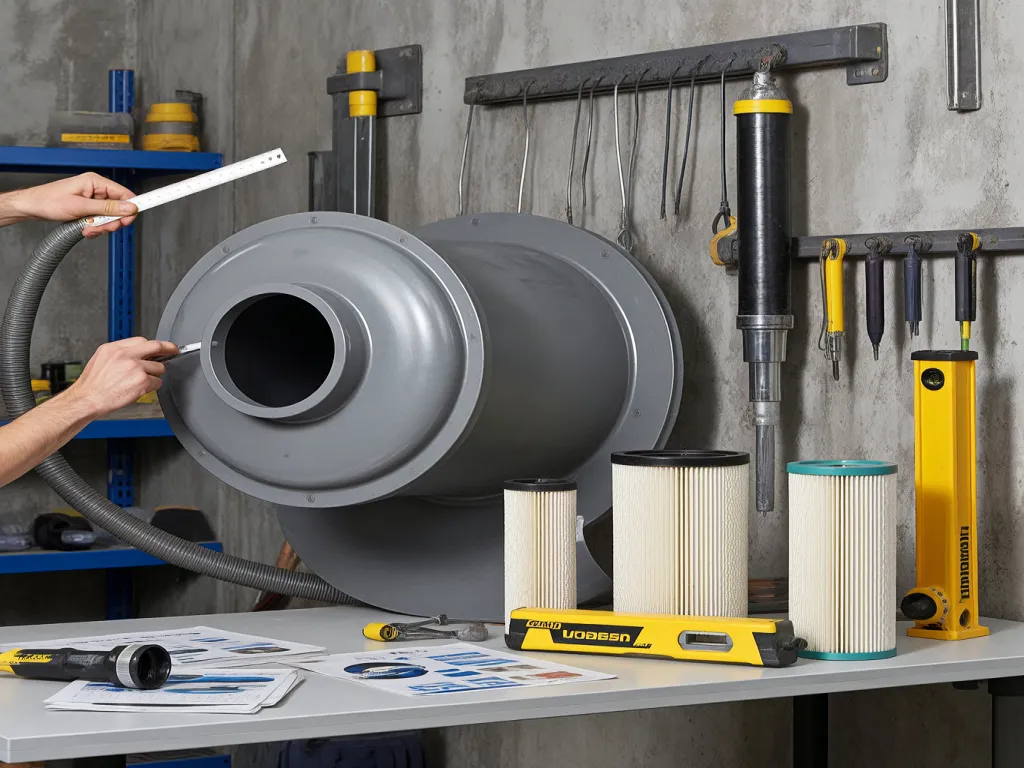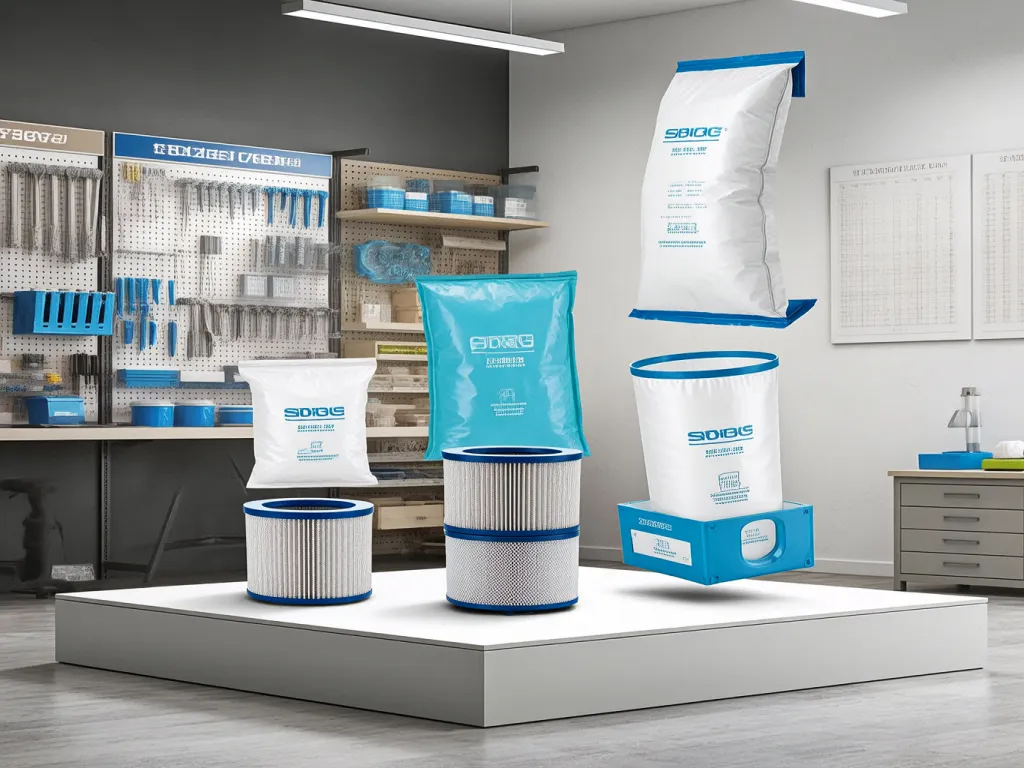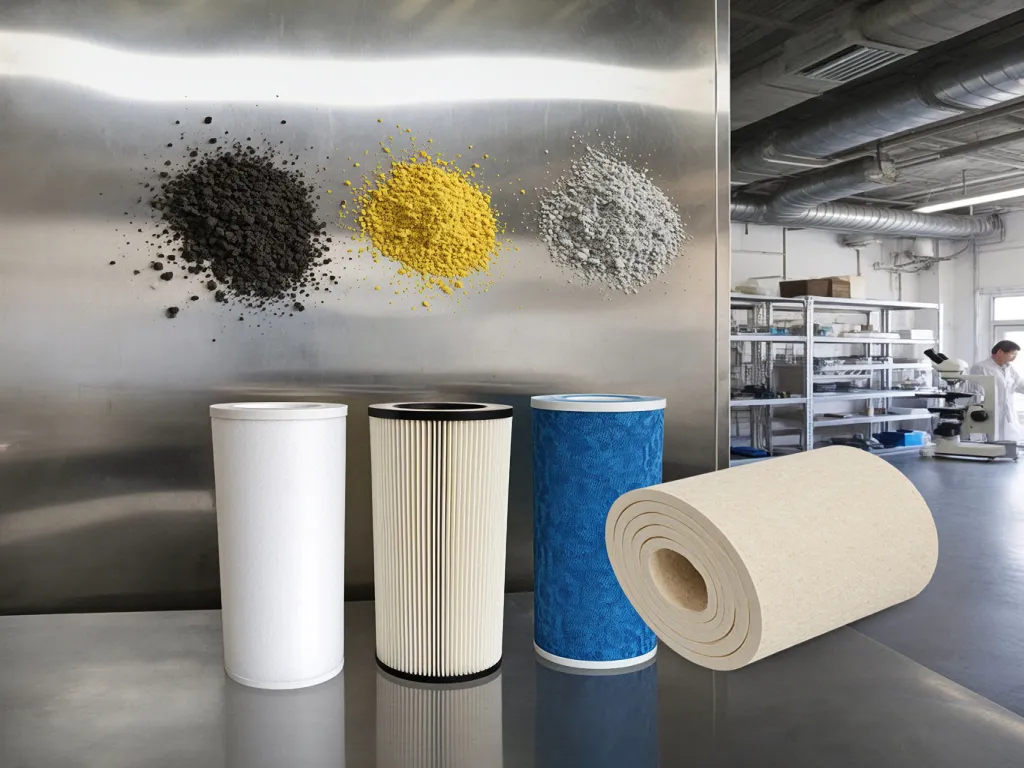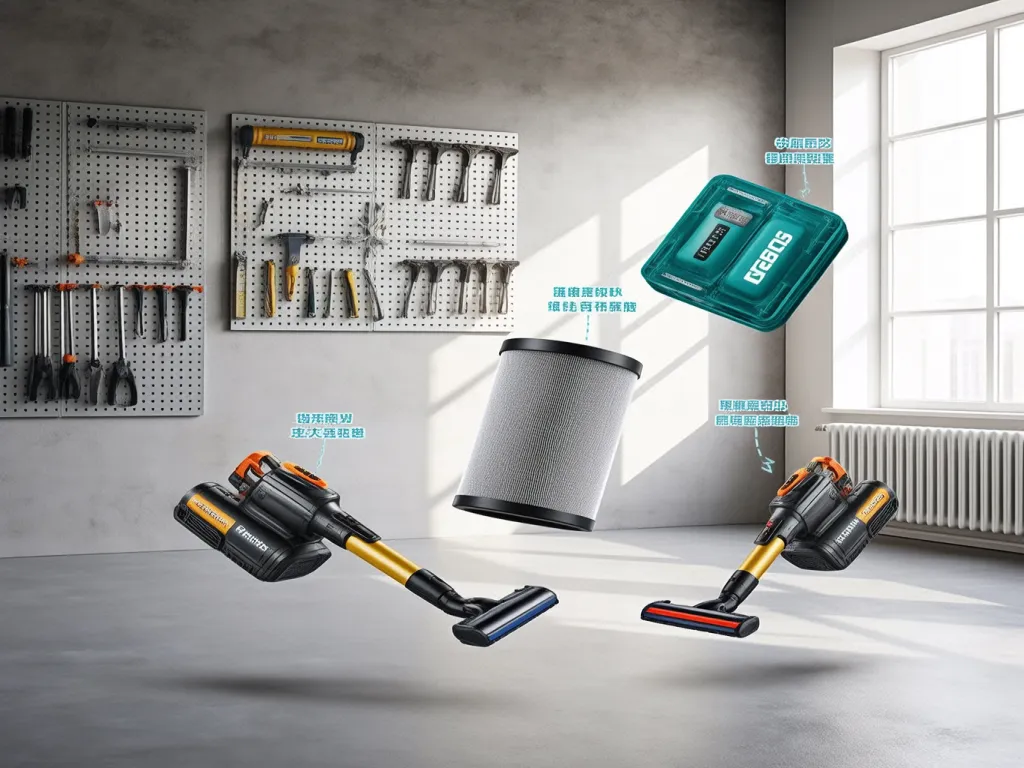Perfect Match Guide: Shop Vac Filter Bags
Ever struggled to find the right shop vac filter bags for your industrial cleaner? You’re not alone. Whether you’re a workshop owner, DIY enthusiast, or industrial cleaner, picking the perfect filter bag isn’t just about size—it’s about compatibility, efficiency, and protecting your equipment. In this guide, we’ll break down how to measure, compare, and choose the ideal shop vac filter bags for your needs. Ready to ditch the guesswork?

Size Adaptability Analysis: How to Measure Shop Vac Inlet Dimensions and Brand-Specific Filter Bag Requirements
When it comes to maintaining optimal performance in your shop vac, getting the right filter bag size isn’t just a matter of convenience—it’s essential for preventing air leaks, ensuring efficient suction, and avoiding premature wear or damage. But how do you navigate the maze of sizes and brand-specific requirements? Let’s break it down step by step. First, let’s tackle the basics: measuring your shop vac’s inlet dimensions. This might sound straightforward, but a few common pitfalls can trip you up. Start by locating the inlet where the filter bag attaches. Using a flexible measuring tape (a rigid ruler won’t conform to curved edges), measure the diameter if the inlet is circular. For rectangular or oval inlets, measure both the width and height. Pro tip: Measure at least twice to account for any slight irregularities in the opening. Now, here’s where things get interesting. Not all shop vacs are created equal, and neither are their filter bags. Some brands, like Ridgid or Craftsman, have proprietary designs that require exact-fit filter bags. For example, Ridgid’s WD series vacuums often use a ‘twist-lock’ mechanism where the bag’s neck must align precisely with the inlet’s threads. Using a generic bag here could lead to a loose fit, causing suction loss or even allowing debris to bypass the filter entirely. Craftsman, on the other hand, might use a snap-on design where the bag’s collar must snap securely into place. A bag that’s too small won’t snap, while one that’s too large might not seal properly, leading to similar issues. Then there’s the matter of depth. Some shop vacs, particularly those designed for heavy-duty industrial use, have deeper inlets that require longer filter bags. Using a shallow bag in a deep inlet means you’re not utilizing the full capacity of your vacuum, leading to more frequent bag changes and higher operational costs. Conversely, a bag that’s too deep might bunch up inside the vacuum, restricting airflow and reducing suction power. So, how do you avoid these pitfalls? The answer lies in understanding your vacuum’s make and model. Manufacturers often provide compatibility charts or even specific part numbers for their filter bags. For instance, if you own a DeWalt DWV012 heavy-duty wet/dry vac, you’ll need to look for filter bags labeled ‘DWV012 compatible’ or with the exact part number (like 513049-00 for some models). These bags are engineered to fit the vacuum’s unique inlet shape and depth, ensuring a perfect seal every time. But what if you’re dealing with an older or less common model where compatibility information isn’t readily available? This is where a bit of detective work comes in handy. Start by searching for your vacuum’s model number online, followed by terms like ‘filter bag compatibility’ or ‘replacement parts.’ Often, forums or manufacturer websites will have user-submitted guides or official documentation listing compatible bags. Another pro tip: don’t overlook the importance of material compatibility. Some shop vacs, especially those used in industrial settings, generate higher heat or handle more abrasive materials. In these cases, you’ll need a filter bag made from a heat-resistant or tear-resistant material, even if the dimensions technically match. For example, a polyester felt bag might be fine for general dust collection, but for fine particles like concrete dust, a HEPA-rated bag with reinforced seams would be a better choice to prevent premature failure. Ultimately, the key to selecting the right shop vac filter bag lies in a combination of precise measurement, brand-specific research, and material awareness. By taking the time to understand your vacuum’s unique requirements, you’ll not only ensure optimal performance but also extend the lifespan of both your filter bags and your vacuum itself. After all, a well-fitted filter bag is like a tailored suit for your shop vac—it just fits better and works harder.

Measuring Shop Vac Inlet Dimensions
Accurate measurement of your shop vac’s inlet dimensions is the first critical step in selecting the right filter bag. Start by identifying the inlet where the bag attaches. For circular inlets, use a flexible measuring tape to determine the diameter. If the inlet is rectangular or oval, measure both the width and height. Remember to measure at least twice to account for any irregularities. This ensures you get a precise dimension, which is vital for finding a filter bag that fits snugly and prevents air leaks.
Brand-Specific Filter Bag Requirements
Different brands of shop vacs have unique design features that require specific filter bag sizes and attachment mechanisms. For example, Ridgid vacuums often use a ‘twist-lock’ system where the bag’s neck must align precisely with the inlet’s threads. Craftsman models might use a snap-on design, requiring a bag with a collar that snaps securely into place. Understanding these brand-specific requirements is crucial to avoid using a generic bag that doesn’t fit properly, leading to suction loss or debris bypass.
Depth Considerations for Filter Bags
The depth of your shop vac’s inlet is another important factor. Some industrial-grade vacuums have deeper inlets that require longer filter bags. Using a bag that’s too shallow means you’re not utilizing the vacuum’s full capacity, leading to more frequent changes. Conversely, a bag that’s too deep might bunch up inside, restricting airflow. Always check the manufacturer’s recommendations for bag depth to ensure optimal performance.

Filter Efficiency Showdown: How Different Materials Stack Up Against Dust & Particulates
When it comes to shop vac filter bags, not all materials are created equal. Whether you’re tackling sawdust in a workshop, cleaning up construction debris, or managing fine particulates in an industrial setting, the type of filter bag you choose can make or break your cleaning efficiency. Let’s dive into the most common materials used for shop vac filter bags—paper, cloth, and HEPA—and compare how they perform, especially when it comes to trapping those pesky, microscopic particles that standard filters often miss.
Paper Filter Bags: Affordable but Limited
Paper filter bags are the budget-friendly option, often coming standard with many shop vacs. They’re great for capturing larger debris like wood shavings, drywall dust, and general dirt. However, their performance drops significantly when dealing with finer particles. Why? Paper filters typically have larger pores, which allow smaller dust particles (think below 10 microns) to slip through. This means that while your floors might look clean, the air you’re breathing could still be loaded with invisible contaminants. If you’re doing light-duty cleaning and don’t mind changing bags frequently, paper is a decent choice. But for anyone serious about air quality, especially in environments where fine dust is a constant, paper filters might leave you wanting more.
Cloth Filter Bags: Durable & Versatile
Cloth filter bags, often made from polyester or a similar synthetic fabric, strike a balance between affordability and performance. They’re more durable than paper, meaning you can reuse them multiple times before needing a replacement. Cloth filters also have smaller pores compared to paper, which improves their ability to trap medium-sized particles. For many DIYers and small workshops, cloth filters are a reliable middle ground. They handle sawdust, concrete dust, and even some pollen effectively. But here’s the catch: while cloth filters are better than paper for fine dust, they still struggle with particles smaller than 5 microns.
HEPA Filter Bags: The Gold Standard for Fine Particulates
HEPA (High-Efficiency Particulate Air) filter bags are the top dogs when it comes to trapping microscopic particles. By definition, HEPA filters must capture 99.97% of particles as small as 0.3 microns. That’s smaller than most bacteria, mold spores, and even some viruses! For industries like pharmaceuticals, healthcare, or cleanrooms, HEPA filters are non-negotiable. But even for hobbyists who want the cleanest possible air—think woodworkers using fine sanders or crafters working with glitter and powders—HEPA filter bags offer unmatched protection. The downside? HEPA filters are pricier and may reduce airflow slightly compared to paper or cloth. However, the trade-off is worth it if you prioritize health and precision cleaning. Studies like those published in PubMed highlight the importance of effective filtration in reducing respiratory risks.
Why Fine Particle Interception Matters
You might be thinking, “Does it really matter if a few tiny particles escape?” Absolutely. Fine dust particles (below 2.5 microns) are known as PM2.5 and can penetrate deep into your lungs, causing respiratory issues over time. For workers in construction, manufacturing, or even home DIYers who frequently use power tools, long-term exposure to fine dust can lead to chronic health problems. Choosing a filter bag that effectively intercepts these particles isn’t just about clean floors—it’s about protecting your lungs and the lungs of everyone around you.
Real-World Performance: A Side-by-Side Comparison
Let’s put theory into practice. Imagine you’re sanding a piece of oak in your garage. A paper filter bag might capture 80% of the visible dust but let nearly all the fine sawdust (below 5 microns) back into the air. A cloth filter could improve that to 90%, still missing some of the smallest particles. A HEPA filter, meanwhile, would trap 99.97% of everything, including the finest dust you can’t even see. Now multiply that by hours of use, days, or years—the difference in air quality becomes staggering.
Conclusion: Choose Based on Your Needs
So, which material is right for you? If you’re doing occasional light cleaning and cost is your primary concern, paper filter bags will do the job. For regular use in a workshop or garage where durability matters, cloth filters offer a good balance. But if you work in an environment where air quality is paramount—or if you simply want the peace of mind that comes with knowing you’re breathing clean air—HEPA filter bags are the clear winner. Remember, the right filter bag isn’t just an accessory; it’s an investment in your health and the efficiency of your shop vac.
Paper Filter Bags: Affordable but Limited
Paper filter bags are the budget-friendly option, often coming standard with many shop vacs. They’re great for capturing larger debris like wood shavings, drywall dust, and general dirt. However, their performance drops significantly when dealing with finer particles. Why? Paper filters typically have larger pores, which allow smaller dust particles (think below 10 microns) to slip through. This means that while your floors might look clean, the air you’re breathing could still be loaded with invisible contaminants. If you’re doing light-duty cleaning and don’t mind changing bags frequently, paper is a decent choice. But for anyone serious about air quality, especially in environments where fine dust is a constant, paper filters might leave you wanting more.
Cloth Filter Bags: Durable & Versatile
Cloth filter bags, often made from polyester or a similar synthetic fabric, strike a balance between affordability and performance. They’re more durable than paper, meaning you can reuse them multiple times before needing a replacement. Cloth filters also have smaller pores compared to paper, which improves their ability to trap medium-sized particles. For many DIYers and small workshops, cloth filters are a reliable middle ground. They handle sawdust, concrete dust, and even some pollen effectively. But here’s the catch: while cloth filters are better than paper for fine dust, they still struggle with particles smaller than 5 microns. If you’re working in an environment where air quality is critical—like woodworking shops with heavy sanding or auto body shops with paint overspray—you might need something more robust.
HEPA Filter Bags: The Gold Standard for Fine Particulates
HEPA (High-Efficiency Particulate Air) filter bags are the top dogs when it comes to trapping microscopic particles. By definition, HEPA filters must capture 99.97% of particles as small as 0.3 microns. That’s smaller than most bacteria, mold spores, and even some viruses! For industries like pharmaceuticals, healthcare, or cleanrooms, HEPA filters are non-negotiable. But even for hobbyists who want the cleanest possible air—think woodworkers using fine sanders or crafters working with glitter and powders—HEPA filter bags offer unmatched protection. The downside? HEPA filters are pricier and may reduce airflow slightly compared to paper or cloth. However, the trade-off is worth it if you prioritize health and precision cleaning.

Brand Compatibility Cases: Finding the Right Shop Vac Filter Bags by Model
Choosing the right shop vac filter bag isn’t just about size and efficiency—it’s also about ensuring compatibility with your specific vacuum model. Imagine buying a bag that looks perfect on paper, only to find it doesn’t fit your machine or performs poorly. Frustrating, right? Let’s dive into real-world brand cases to show you how to avoid this headache.
Case 1: DeWalt’s DXV Series
DeWalt’s DXV series is popular among industrial users for its durability. But did you know that not all ‘universal’ filter bags work here? Suppose you own a DeWalt DXV04P. The official filter bag (model DXV04PBAG) is designed with a proprietary locking mechanism that prevents air leakage. A generic bag might seem to fit, but without the locking feature, you’ll lose suction power over time.
How to Identify Compatibility:
- Check the product label for ‘DeWalt DXV04P Compatible’ or ‘DXV04PBAG Equivalent’.
- Look for the DeWalt logo and model number on the packaging.
- Avoid bags labeled ‘universal’ unless they explicitly mention DXV compatibility.
Case 2: Ridgid’s WD Series
Ridgid’s WD series vacuums are known for their heavy-duty performance. However, their filter bags (like the WD1450BAG) have a unique pleated design that maximizes surface area. A non-Ridgid bag might fit the dimensions but lack the pleats, reducing filtration efficiency by up to 30%.
Key Compatibility Markers:
- The packaging should state ‘Ridgid WD Series Compatible’.
- Check for the ‘Pleated Design’ feature in the product description.
- Verify the bag’s thickness (Ridgid bags are typically 0.5mm thicker than generics).
Case 3: Craftsman’s XSP Series
Craftsman’s XSP vacuums are a favorite for fine dust collection. Their filter bags (e.g., XSP12BAG) use a micro-porous material that traps particles as small as 0.3 microns. A standard bag might filter larger debris but let fine dust escape, clogging your vacuum’s motor over time.
What to Look For:
- The term ‘Micro-Porous’ or ‘Fine Dust Filtration’ on the label.
- A compatibility chart on the seller’s website listing XSP models. For instance, you can check our Craftsman XSP Compatibility Page for detailed model-specific recommendations.
- Avoid bags without HEPA certification if you’re dealing with allergens.
Common Pitfalls to Avoid
- Assuming ‘Universal’ Means ‘All Models’: Always cross-reference your vacuum’s model number with the bag’s compatibility list.
- Ignoring Material Specifications: For fine dust, opt for bags labeled ‘HEPA’ or ‘Micro-Filtration’.
- Overlooking Seal Quality: A bag that doesn’t seal properly will leak dust and reduce suction.
Pro Tip: Use Manufacturer Resources
Most brands offer online compatibility tools. For example, DeWalt’s website has a ‘Parts Finder’ where you input your model number to see compatible bags. Similarly, Ridgid provides a downloadable PDF with model-specific recommendations.
By now, you might be thinking, ‘This seems complicated!’ But here’s the truth: investing 10 minutes in checking compatibility can save you hours of frustration and money on replacements. Plus, the right bag ensures your vacuum runs at peak efficiency, extending its lifespan.
So, next time you’re shopping for shop vac filter bags, ask yourself: ‘Does this bag match my model’s unique needs?’ If the answer isn’t a clear ‘yes,’ keep looking. Your vacuum—and your wallet—will thank you.
DeWalt DXV Series: The Locking Mechanism Matters
DeWalt’s DXV04P requires a bag with a specific locking mechanism. Without it, suction power diminishes, and dust escapes. Always verify the bag includes this feature before purchasing.
Ridgid WD Series: Pleated Design for Maximum Efficiency
Ridgid’s pleated bags increase surface area, improving filtration. Generic bags lack this design, leading to poorer performance. Look for ‘Pleated Design’ in the product specs.
Craftsman XSP Series: Micro-Porous Material for Fine Dust
Craftsman’s XSP bags use micro-porous material to trap tiny particles. Standard bags can’t compete. Opt for HEPA-certified options if allergens are a concern.
Choosing the right shop vac filter bags isn’t just about fitting a space—it’s about optimizing performance, safeguarding your equipment, and achieving spotless results. By mastering size measurements, filtering efficiency, and brand-specific compatibility, you’ll save time, money, and frustration. Share this guide with fellow cleaners or bookmark it for your next filter upgrade. And if you’ve ever wondered: ‘What if there’s a better match out there?’—the answer starts here. Dive deeper into our compatibility charts and size guides to unlock your vacuum’s full potential.
